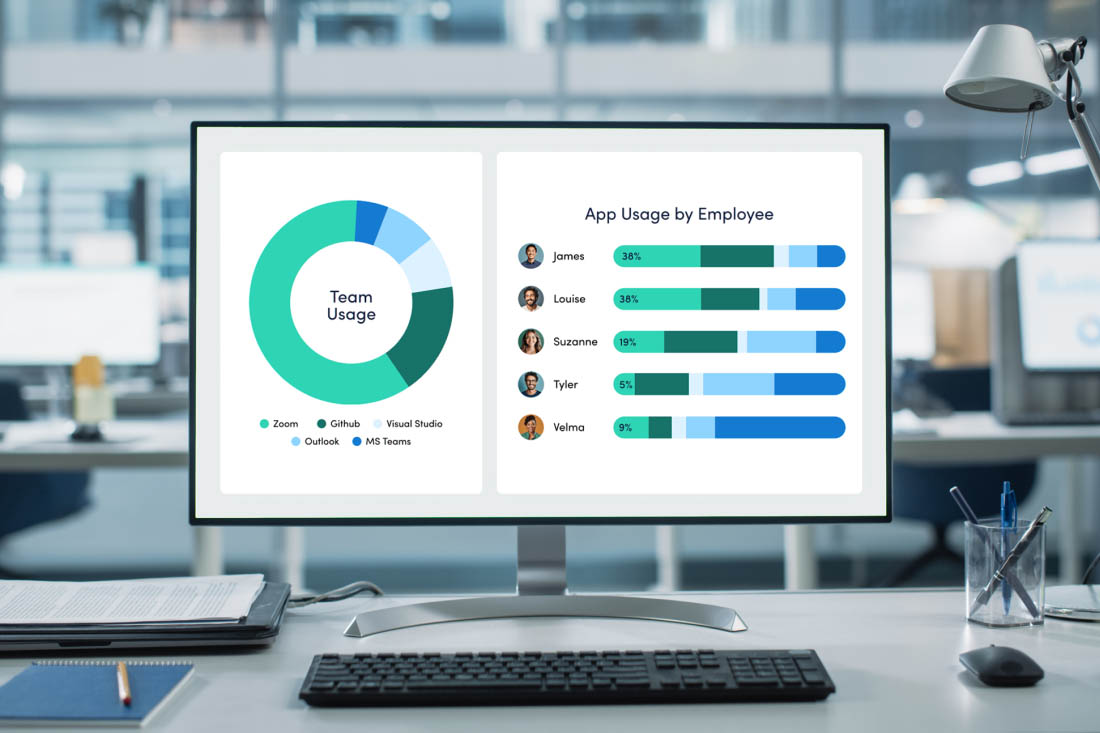Big data. Business intelligence. Data mining. These aren’t just buzzwords — they’re essential to success in the modern business world. Leveraging data and analytics empowers you to make more strategic choices — ones backed by evidence rather than gut feelings or intuition.
But what does it actually mean to make data-driven decisions?
Contrary to what you may have heard elsewhere, data management doesn’t have to be a big, scary endeavor. In fact, with a little knowledge and the right tools, you can start collecting and analyzing data for your organization today.
To help you get started, let’s take an in-depth look at data-driven decision making — what it is, why it matters and how to harness it for your business with a simple, three-step approach.
What is data-driven decision making?
Data-driven decision making (DDDM) is the use of actual numbers to guide company policies, plans and programs. It involves collecting, measuring and analyzing data on people, process and technologies — and then using the findings to make informed decisions. Organizations with strong data cultures regularly make decisions based on evidence rather than observations, anecdotal evidence or best guesses.
Why data-driven decisions are important for businesses
If you really want to drive innovation and results, you have to use data to inform decisions. Data is the lifeblood of the modern business world, and it opens the door to all kinds of untapped opportunities. These findings say it all:
- A McKinsey survey found data-driven companies are 23 times more likely to acquire new customers compared to competitors. They’re also seven times more likely to retain those customers and 19 times more likely to stay profitable.
- According to Forrester, insight-driven organizations are nearly three times more likely to report double-digit growth than companies that haven’t yet mastered data analytics.
- In a study conducted by Harvard Business Review for Google Cloud, data leaders outperform peers in critical areas including operational efficiency, revenue, customer loyalty and retention and employee satisfaction.
And these studies are just the tip of the iceberg. The more you harness your data, the more opportunities you’ll discover. Customer interactions, sales transactions and online employee activity all offer important insights. The sooner you use them, the better positioned you’ll be to boost productivity, performance and engagement.
Benefits of data-driven decision making
Some of the top benefits companies gain from data-driven decision making include:
- A better customer experience: Why guess at customer needs when you can know for sure what they want. Data tells you exactly what your customers are looking for, making it easier than ever to create personalized experiences.
- More productivity: With data-driven insights to guide them, employees gain a clearer understanding of goals and how to achieve them. This can help employees work smarter, not harder resulting in better productivity.
- Fewer mistakes: Using data to drive decisions reduces mistakes, as you can pinpoint when things go wrong and why to prevent similar issues in the future.
- Faster buy-in: With data on your side, it’s much easier to make a compelling case for new projects and goals.
- Measurable goals and outcomes: Numbers don’t lie. Data collection lets you see when your team reaches new milestones and empowers you to reach for newer, bigger goals.
- Greater accuracy: Optimizing your headcount, reducing costs and planning for future changes are all much more precise when you have data to guide you.
There are plenty of other ways to put your data to work — to improve marketing campaigns, land more sales, guide product development and more. But what does this look like in practice? Let’s take a look at several real-world examples.
Examples of how companies use data-driven decision making
What does data-driven decision making look like in the business world? Here are a few examples from companies that use ActivTrak.
1. ShipSticks improves customers service
ShipSticks managers knew they needed to improve customer service, but wanted to understand why. A quick look at workforce data revealed the underlying issue. Turns out, reps had to open multiple applications to service one customer. Switching back and forth between apps was creating frustrating delays for customers. Armed with this information, the team knew to speed up service by eliminating unnecessary applications and streamlining technology.
2. Echo Global Logistics increases pricing accuracy
At Echo Global Logistics, accurately pricing services for each client is critical. But it wasn’t always clear which client operations were simple and straightforward, and which ones required more billable time and effort. By using ActivTrak to measure how much time employees spent on each task, the company was able to more accurately price each client deliverable.
3. Fam Brands enriches the employee experience
For apparel manufacturer Fam Brands, data visualization helped improve the employee experience. For instance, rather than jumping into hybrid work, business leaders first analyzed location insights to see where people performed at their best. When the data revealed employees who work from home are more productive, the company decided to expand its pilot program to 500 corporate employees.
Other ActivTrak customers have used data to uncover $4.2 million in productivity gains, identify $800,000 in savings on unused software licenses, and quadrupled ROI by auditing contractor billing.
3 key steps for implementing data-driven decision making
Now that we’ve explored the principles behind data-driven decision making, let’s examine the steps involved in implementing this approach in your business.
The good news? You don’t need a full-time data analyst to achieve results like the ones described above. Today’s executive dashboards make it easy for any decision maker to quickly identify trends and uncover opportunities. Here’s how to start using them today.
1. Identify your business goals
Clearly define your business goals first, before diving into your dashboards. This will help you focus on relevant data rather than becoming lost in an endless sea of numbers. By setting specific, measurable, achievable, relevant and time-bound (SMART) goals, you can align your data with your strategic objectives. For example, if your goal is to increase customer satisfaction, you’ll know to focus on metrics like customer satisfaction scores and churn rates.
2. Collect relevant data
Once you define your goals, it’s time to collect the data that will support your decision-making process. This information can come from various sources, such as customer surveys, sales records, social media platforms and external market research. Our advice? Find a platform to do the heavy lifting. For example, if you want to improve employee productivity and performance, use ActivTrak to collect and analyze workforce data for you.
3. Analyze and address
After collecting the data, the next step is to analyze and interpret it. The key is to set a schedule that allows you to get into the habit of regularly reviewing your data. While it doesn’t have to be daily, it should be consistent. Whether you look at your reports weekly or monthly, set a schedule and stick to it. And don’t just review your dashboards — act on them. For instance, if the data shows a team is at high risk of burnout and disengagement, explore strategies to motivate them immediately.
Make data-driven decisions with ActivTrak
Ready to make more informed, evidence-based decisions? Following this step-by-step guide is a great place to start. It’ll help you develop a data culture where harnessing the power of data is second-hand — and you won’t have to hire an army of analysts to get there.
To fast track your journey to data-driven decisions even more, schedule a demo with ActivTrak to learn how our platform can help you assess employee productivity and optimize important operations. It’s the quickest, easiest way to get started with workforce analytics that fuel data-driven decision making.





